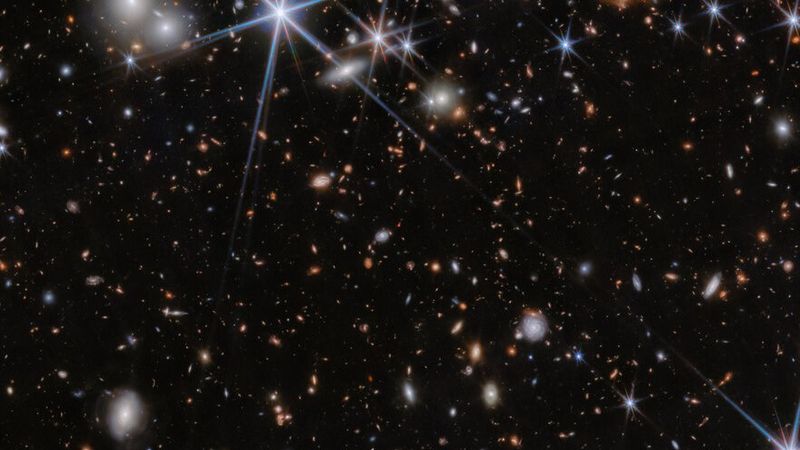The word nova comes from “nova stella”, Latin for “new star”, the name Tycho Brahe gave to the sudden appearance in 1572 of a light in the sky where none had been seen before.
For centuries thereafter every sudden appearance of a new star in the sky was called a nova. Since we have learned more about the distances to these objects, and therefore their intrinsic brightnesses, we’ve created different categories. We classify the object Tycho saw as a supernova and use nova to refer to something a little different. Supernovas are not just slightly brighter versions of novas, they’re the result of one of two processes, each distinct from those that cause nova. Moreover, their intrinsic brightness differs by more than 10,000 times.
Both classes of objects, and the more recently named hypernovas and kilonovas, have become among our best guides to the workings of the universe, so it is important to understand the nature of each.
Nova
Dying seven years before the invention of the telescope, Tycho could not know that these “new stars” were not new at all, but objects previously too faint to see with the naked eye that suddenly flared in brightness.
Indeed each nova is actually two stars, one of which is a white dwarf, that is a star that has gone through its life cycle and contracted to the point where an object the size of Earth has mass similar to the Sun.
The other star is usually a red giant – a star so puffed up that its gravitational hold on its outer layers is weak. The two are locked in a tight orbit and gradually the white dwarf pulls material from its companion to settle on its surface.
Arriving on the incredibly hot and dense surface of the white dwarf initiates fusion in the new material, releasing the associated energy in a quick burst.
Some novas do this fairly regularly, particularly if the pair have an elongated mutual orbit that only brings them close enough for the mass transfer to occur at certain times. The brightest of these, T Coronae Borealis, is expected to undergo another brightening next year or the year after.
Supernova
Unlike the other categories described here, supernovas can have more than one cause. They share a name because they reach similar intrinsic brightnesses, even though their paths getting there differ.
Supernovas were categorized based on the elements found in their spectrum before we understood their processes. Consequently, although divided into Type I and II, this fails to capture the more important distinction in the processes that can, for a month, cause them to outshine their entire galaxy.
Type Ia supernovas resemble nova in that they involve a white dwarf and a nearby star. However, instead of inducing an explosion in a relatively modest amount of material pulled off the companion, the white dwarf captures so much mass it passes the crucial 1.44 solar mass threshold.
When a white dwarf passes this mass, known as the Chandrasekhar limit, the whole thing explodes, releasing 1044 Joules. Some debate continues as to whether Type Ia supernovas usually represent two white dwarfs merging, a process known as double degeneracy. The more conventional view is that most are more like novas, except that the white dwarf sat very close to the Chandrasekhar limit before it pulled material off the neighboring red giant or main sequence star.
The other type of supernova, more common in the popular imagination but less sought by astronomers, includes Types Ib, Ic, and all the Type IIs. These involve giant stars that at the end of their lives have burned all their lighter elements. Unable to provide the outward force to counteract gravity, the stars’ cores collapse, causing an immense increase in temperature which produces a rebound, releasing vast amounts of energy and throwing off an expanding cloud of material.
Hypernova
Arguably a hypernova is just a large supernova with good PR. They form when stars with more than 30 solar masses undergo core collapse, similar to the process described above.
However, where most core-collapse supernovas release similar amounts of light to Type Ias, hypernovas are at least 10, and sometimes a hundred, times brighter. Thus the hype.
Hypernovas are also associated with long gamma-ray bursts, and the black holes they produce are thought to rotate and emit near-light-speed jets, like small versions of the supermassive black holes at the heart of galaxies.
Whereas the other categories described here are clearly distinct from each other, there remains some debate about where the line between supernova and hypernova should be drawn.
Kilonova
Kilonova is also a new term, coined to describe something first witnessed in 2017. Kilonovas involve two neutron stars orbiting around each other whose orbits decay to the point where they collide, releasing both a gravitational wave and electromagnetic radiation, also including gamma ray bursts.
Neutron stars are rare – only existing as the products of core-collapse supernovas from stars not large enough to become black holes. Naturally, having two in such close proximity they eventually collide is rarer still. It’s only since we’ve been able to detect gravitational waves across more than a hundred million light-years we’ve been able to find any.
Nevertheless, kilonovas provide the vast majority of a great many of the heavier elements in the universe. One produced a thousand Earth-masses in heavy metals alone. Without them, the Earth would be lacking in many of the materials we need to build a technological society, and even humanity’s existence might have proven impossible.




